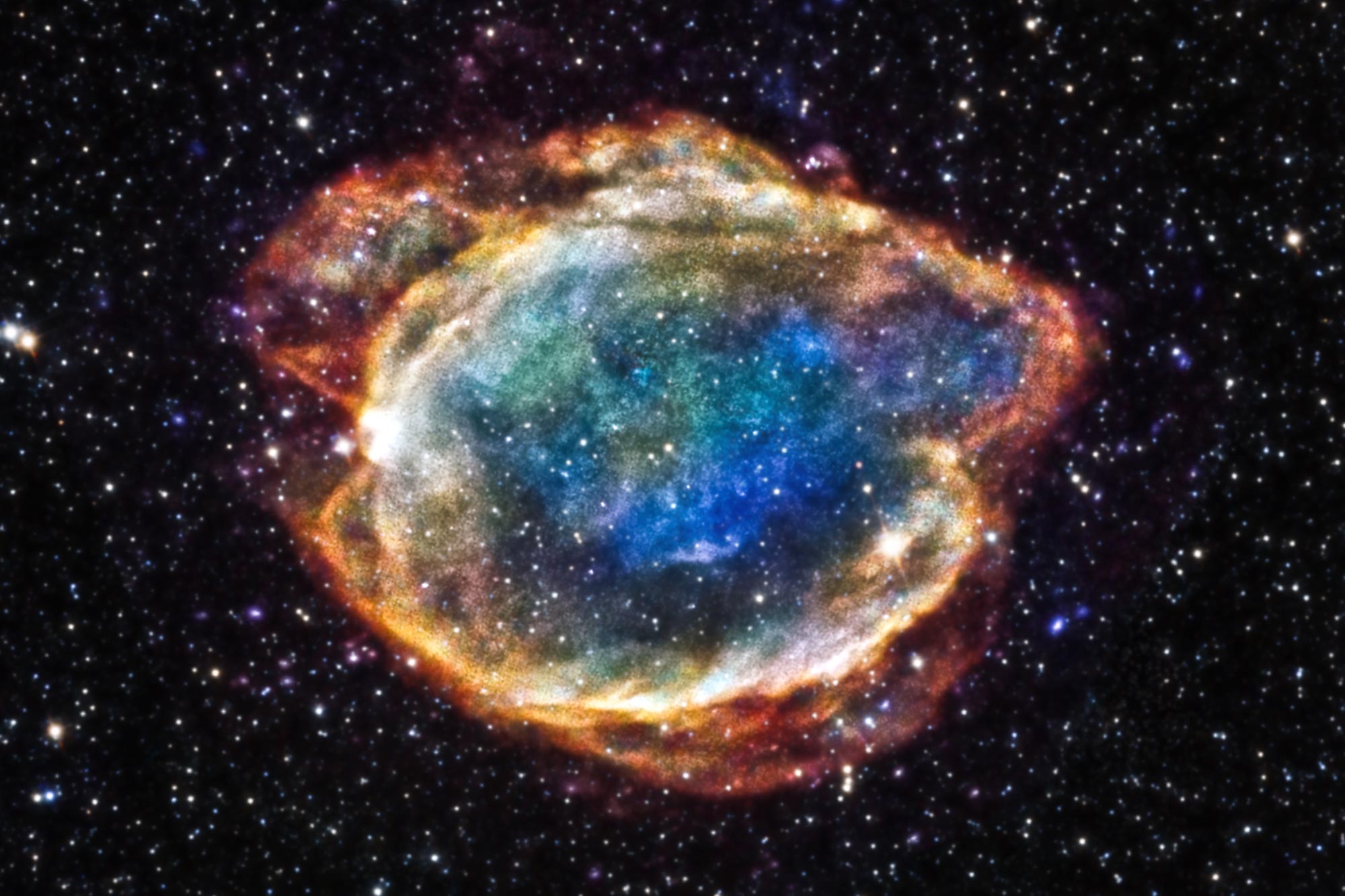
The radioactive elements could have been blown onto the nascent solar system by a nearby exploding star (a supernova) or by the strong stellar winds from a type of massive star known as a Wolf-Rayet star. The presence of radioactive material at the birth of the Solar System has been a giant puzzle for the last 50-years. Does the formation of planetary systems like our own require a Goldilocks situation, not too close, not too far from a source of radioactive material?
The authors of a new study used multi-wavelength observations of the Ophiuchus star-forming region, including spectacular new infrared data from the Vienna-led VISIONS Survey currently ongoing at the ESO survey telescope in the Chilean desert, that reveals the interactions between the clouds of star-forming gas and radionuclides produced in the nearest cluster of young stars. Their findings indicate that supernovas in the previous generation of stars are the most likely source of short-lived radionuclides in the star-forming clouds.
“Our solar system was most likely formed in a giant molecular cloud together with a young stellar cluster, and one or more supernova events from some massive stars in this cluster contaminated the gas which turned into the sun and its planetary system,” says co-author Douglas N. C. Lin from UC Santa Cruz. “Although this scenario was in the past, the strength of this paper is to use multi-wavelength observations and a sophisticated statistical analysis to deduce a quantitative measurement of the model’s likelihood.”
The Ophiuchus cloud complex contains many dense protostellar cores in various stages of star formation and protoplanetary disk development, representing the earliest stages in the formation of a planetary system. By combining imaging data in wavelengths ranging from millimeters to gamma rays, the researchers could visualize a flow of aluminum-26 from the nearby star cluster toward the Ophiuchus star-forming region.
“The enrichment process we see in Ophiuchus is consistent with what happened during the formation of the solar system 5 billion years ago,” says John C. Forbes. “Once we saw this nice example of how the process might happen, we set about trying to model the nearby star cluster that produced the radionuclides we see today in gamma rays. We now have enough information to say that there is a 59 percent chance it is due to supernovas and a 68 percent chance that it’s from multiple sources and not just one supernova,” says Forbes.
This type of statistical analysis assigns probabilities to scenarios that astronomers have been debating for the past 50 years, Lin notes. “This is the new direction for astronomy, to quantify the likelihood,” he says.
“There is nothing special about Ophiuchus as a star formation region,” says João Alves from the University of Vienna. “It is just a typical configuration of gas and young massive stars, so our results should be representative of the enrichment of short-lived radioactive elements in star and planet formation across the Milky Way. We are not that special after all, and we should expect many other Solar Systems like our own floating in the Milky Way.”
The new findings also show that the amount of short-lived radionuclides incorporated into newly forming star systems can vary widely. “Many new star systems will be born with aluminum-26 abundances in line with our solar system, but the variation is huge – several orders of magnitude,” says Forbes. “This matters for the early evolution of planetary systems, since aluminum-26 is the main early heating source. More aluminum-26 probably means drier planets.”
The team also used data from the European Southern Observatory VISTA telescope, the European Space Agency’s (ESA) Herschel Space Observatory, the ESA’s Planck satellite, and NASA’s Compton Gamma Ray Observatory.

